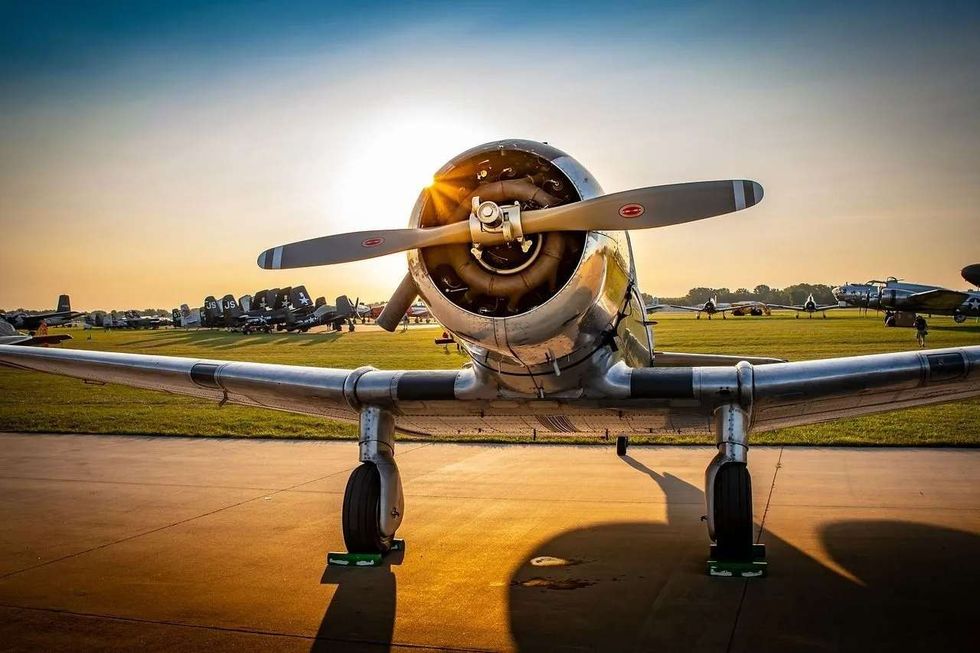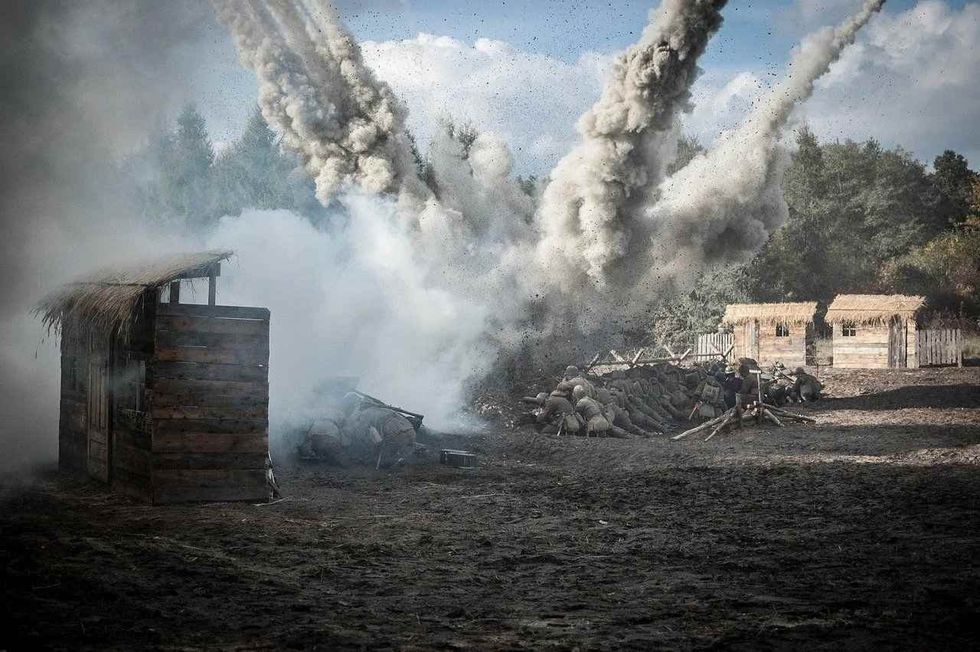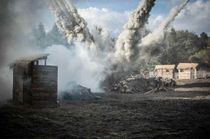69 Must-Know Facts About World War 2 For Kids

World War II, or the Second World War, was a battle that engulfed almost the whole globe from 1939 through 1945.
Following a tight 20-year pause, the war resumed problems left unsolved by the First World War. With between 40 and 50 million people dying, World War II was the bloodiest and most gruesome war in history.
Like World War I, World War II was a turning point in world history in the 20th century. The Soviet Union's control was extended to eastern European nations, enabling a communist movement to capture power in China and signaling a radical change in global power away from Western European governments and toward the US and the Soviet Union.
World War II: Overview
By the early part of 1939, Adolf Hitler, the German ruler, had decided to attack and conquer Poland. In a German attack, Poland received military guarantees from France and the United Kingdom.
Hitler had already made up his mind and was prepared to invade Poland, but he wanted to remove the possibility that the Soviet Union might defend its western neighbor.
The Allies won World War II in(France, Great Britain, the United States, and the Soviet Union)
The main reason for World War II was Adolf Hitler and his invasion of Poland in June 1939. After this, Great Britain and France declared war on Germany, which marked the beginning of World War II.
After secret discussions, the German-Soviet Nonaggression Pact was signed in Moscow on August 23–24. The German armed forces and the Soviets agreed in a private protocol of this deal that Poland would be partitioned among them, with the western third going to Germany and the eastern two-thirds going to the USSR.
Adolf Hitler felt Germany could attack Poland without fear of Soviet or British participation after reaching this cynical agreement, the other aspects of which startled Europe even before the secret protocol was released.
On August 26, Adolf Hitler issued instructions for the invasion to commence. After discovering that Great Britain and Poland had signed a formal pact of mutual assistance on August 25, he postponed the start of hostilities for a few days (which would replace a prior but temporary arrangement).
Adolf Hitler was persistent about disregarding the diplomatic efforts of western governments to restrain him.
Finally, at 12:40 p.m. on August 31, 1939, Hitler issued an order for hostilities against Poland to commence at 4:45 a.m. the next day. The invasion went off without a hitch.
Consequently, on September 3, between 11:00 a.m. and 5:00 p.m., Great Britain and France declared war on Germany. World War II was now officially started.
After Effects Of World War II
World War II conflicted with long-term economic growth. Also, World War II severely harmed future generations' economic prospects. Warfare depleted capital stock by destroying infrastructure, productive capacity, and housing via bombing and fighting, which caused food and other products to be diverted to military production.
In 1939, the world's population was estimated to be over 2 billion people.
According to the best estimations, between 62 and 78 million people died due to World War 2, accounting for more than 3% of the world's population.
While people were killed in past conflicts, civilians were disproportionately impacted by World War 2, accounting for almost half of European losses.
In terms of civilian casualties, the Nazi Germany dictatorship killed between 11 and 17 million citizens for political or racial reasons.
During the war, the majority of men perished, resulting in low male/female ratios across Europe following the war, as well as the absence of many males during respondents' early years.
Because the male bias in mortality was concentrated among troops, whereas civilian and Holocaust fatalities were generally gender-neutral, the USSR and its neighbors were the ones who were most impacted. Germany was the most afflicted nation in our statistics, with five million military fatalities.
Hunger is one way via which World War 2 had influenced long-term adult health and socioeconomic results.
Several severe food crises occurred during World War 2, resulting in numerous deaths and perhaps having long-term impacts on survivors' health. The nutritional status of the non-German population in Poland has been terrible since the commencement of the German occupation.
In 1941, the average caloric intake of the Polish population was around 930 calories. In 1941, the Warsaw Ghetto had the worst condition, with average food rations of just 186 calories per day.
World War explored the experience of property dispossession. Dispossession was often coupled with persecution, and it resulted in population relocation both during and after the conflict.

Countries Involved In World War II
After World War I, Germany signed the Treaty of Versailles, admitting defeat at the hands of the Allies.
Allied forces fought not just against Germany but also against Italy and Japan throughout World War 2.
Though the latter two countries were Allies during the First World War, they united as the major Axis powers; Germany, Italy, and Japan.
Great Britain, France, and the United States were the main Allied Powers. France, Poland, and the United Kingdom were the Allies at the commencement of World War 2 in 1939.
The autonomous British dominions of Australia, Canada, New Zealand, and South Africa joined a few days later.
As the conflict progressed, more countries began to join the Allies. The Allied Powers were made up of all 26 original signatories of the United Nations Declaration, which was signed on January 1, 1942.
Canada, Australia, South Africa, New Zealand, Brazil, the United Kingdom, and the United States were all recognized as Allied Powers during World War 2.
The Commonwealth countries, such as New Zealand, Australia, and Canada, as well as French and British colonial empires (such as India), joined the Allies, which had previously shown resistance.
All in all, participant countries included Australia, Brazil, Belgium, Canada, China, Czechoslovakia, Denmark, Estonia, France, Greece, India, Latvia, Lithuania, Malta, New Zealand, Netherlands, Norway, Poland, South Africa, United Kingdom of Great Britain, United States of America, the Soviet Union, Yugoslavia, and many more.
Interesting World War II Facts
The United Kingdom and France maintained their appeasement policies. In the face of increasingly incendiary Nazi Germany activities, this was despite some internal criticism.
The Marco Polo Bridge Incident went on to trigger the Second Sino-Japanese War in July 1937. Some consider this to be the commencement of World War 2, given it was carried out against a background of international appeasement.
During World War, The Nazi-Soviet Pact was signed on August 23, 1939. The Pact divided central Europe between Germany and the Soviet Union, laying the groundwork for the German invasion of Poland.
The Nazi party rule invasion of Poland was accomplished on September 1, 1939, as it was the last straw for the British. After Hitler broke the Munich Agreement by annexing Czechoslovakia, the British army had guaranteed Polish sovereignty. They declared war on Germany on September 3.
On September 3, 1939, at 11:15 a.m., Neville Chamberlain declared war on Germany. His address was followed by the distinctive sound of air force sirens two days after their invasion of Poland.
However, the primary thrust of Germany's assault into France bypassed the Maginot Line, marching through southern Belgium and the Ardennes in northern Luxembourg as part of the Sichelschnitt plan.
The Germans used blitzkrieg tactics. To capture territory quickly, they deployed armored vehicles and planes. This military tactic was created in the '20s in the United Kingdom.
Countries used the world's first atomic bomb during this war.
From May 12-15, the Battle of Sedan was a watershed event for the Germans, who poured into France after that.
World War 2 began in 1939 and ended in 1945.
The Allied troops were miraculously evacuated from Dunkirk, saving 193,000 British and 145,000 French men. Although 80,000 people were left behind, Operation Dynamo did a great job when only 45,000 people were expected to be rescued.
200 Royal Navy ships, the Royal Air Force, and 600 volunteer boats were involved in the operation.
On June 10, Mussolini declared war on the Allies. His initial effort, launched without German knowledge via the Alps, resulted in 6,000 losses, with frostbite accounting for more than a third of them. The number of French casualties was just 200.
The Soviet forces were much more powerful than the German forces.
In mid-June, another 191,000 Allied forces were evacuated from France. However, the British suffered the worst recorded casualties in a single maritime event when the Lancastria was destroyed by German aircraft on June 17.
Around three million Axis armed forces were deployed in the Battle of France. They were initially matched in numbers by the powers.
In July 1940, the RAF had roughly 1,960 aircraft at its disposal. Around 900 fighters, 560 bombers, and 500 coastal planes were included in that number. During the Battle of Britain, the Spitfire fighter became the hero of the RAF's fleet, even though the Hawker Hurricane shot down more German planes.
The Luftwaffe had 1,029 fighters, 998 bombers, 261 dive-bombers, 151 reconnaissance planes, and 80 coastal planes at its disposal.
The Battle of Britain commenced on July 10. Germany started daytime bombing assaults on Britain on the first day of the month, but the strikes increased on July 10. German forces concentrated their attacks on southern parts.
On August 31, the RAF's Fighter Command had its worst day of the campaign. On this day, the Fighter Command suffered its most significant casualties, with 39 planes shot down and 14 pilots killed amid a big German operation.
In a single raid, the Luftwaffe fired around 1,000 aircraft. On September 7, turning its attention away from RAF targets, the German forces advanced to London and other cities, towns, and industrial targets.
The bombing assault that came to be known as the Blitz began right here. On the first day of the war, about 1,000 German bombers and fighter planes swooped down on London to launch massive bombing strikes.
The death toll in Germany was significantly greater than in the United Kingdom. The Allies had lost more than 1,547 aircraft and sustained 966 losses, including 522 fatalities, by October 31, the day the combat is widely believed to have finished.
1,887 aircraft and 4,303 airmen were lost by the Axis, with 3,336 of them dying. Germany was bombed and damaged during World War 2.
Before the end of 1940, the German bombardment claimed the lives of 31,000 to 55,000 British civilians, including 23,000 fatalities. The Fighter Command suffered its most significant casualties, with 39 planes shot down and 14 pilots killed amid a big German operation.
In April 1941, a new pro-German army administration assumed control in Iraq. It was compelled to allow continued British access via its territory by the end of the month.
91 British tanks were lost during Operation Tiger. Only 12 panzers were immobilized in exchange, and Wavell was quickly replaced by General Sir Claude Auchinleck, dubbed 'the Auk.'
Between January and August 1941, 90 Axis ships were sunk in the Mediterranean. The Afrika Korps was denied vital modern tanks and desperately needed food to avoid starvation and sickness.
In November 1941, the Allies advanced from Tobruk with significantly superior resources. They started with 600 tanks, 249 panzers, and 550 aircraft, compared to the Luftwaffe's 76.
The Allies had lost 300 tanks and 300 planes by January, but Rommel had been pushed back considerably.
On August 25, 1941, Soviet forces and British soldiers invaded Iran to grab oil reserves. On June 21, 1942, Rommel regained Tobruk, capturing hundreds of tonnes of oil in the process.
In October 1942, the big Allied army crossed attack at Alamein restored the losses suffered in July. Racial wars and the Holocaust are examples of ethnic cleansing.
In 'Mein Kampf' (1925), Hitler revealed his plans to seize enormous swaths of land for a new Reich, saying, 'The plow is then the sword, and the tears of battle will produce the daily food. For generations to come.'
During the Battle of Britain in World War II, Nazi party Germany's secret name for an invasion of the United Kingdom was Operation Sea Lion.
Between April 16 and May 2, 1945, the Soviets accumulated 2.5 million men and suffered 300,000 losses, with almost a third dead.
From September 1939, when the Nazi party started dealing with the 'Jewish issue,' ghettos grew throughout Poland.
From November 1939, many countries used carbon dioxide-filled rooms to execute people with mental disabilities. In September 1941, Zyklon B was first used in Aushwitz-Birkenau.
Between the beginning of the war and August 1941, 100,000 mentally and physically ill German troops were slain. Hitler had established an official euthanasia program to rid the country of such' Untermenschen.'
In 1941, the Nazi Hunger Plan resulted in the death of nearly two million Soviet inmates. Between 1941 and 1944, an estimated 2 million Jews in western Europe were massacred. The Shoah by Bullets was the name given to it.
In 'remembrance' of Heydrich, the Nazis dubbed the roll-out of execution camps at Beech, Sobibór, and Treblinka Aktion Reinhard. Heydrich had died following the contamination of wounds sustained in an assassination attempt in Prague on May 27, 1942.
The Nazi rule government ensured that they got the most money from their mass executions. They repurposed their victims' belongings as raw materials for the war effort, presents for their german troops, and clothes for Germans who had their houses blasted out.
While World War 2 ensued, it resulted in the deaths of about five million Jewish people.
As the Soviets advanced, Majdanek became the first camp freed in July 1944. In January 1945, Chelmno and Auschwitz were added to the list.
In August 1943, the Nazis liquidated several extermination camps following an insurrection, including Treblinka. As the Allies moved on to Berlin, those who remained were finally released.
We Want Your Photos!
More for You
Master of Computer Science

Abhijeet ModiMaster of Computer Science
An experienced and innovative entrepreneur and creative writer, Abhijeet holds a Bachelor's and Master's degree in Computer Application from Birla Institute of Technology, Jaipur. He co-founded an e-commerce website while developing his skills in content writing, making him an expert in creating blog posts, website content, product descriptions, landing pages, and editing articles. Passionate about pushing his limits, Abhijeet brings both technical expertise and creative flair to his work.
Disclaimer
1) Kidadl is independent and to make our service free to you the reader we are supported by advertising. We hope you love our recommendations for products and services! What we suggest is selected independently by the Kidadl team. If you purchase using the Buy Now button we may earn a small commission. This does not influence our choices. Prices are correct and items are available at the time the article was published but we cannot guarantee that on the time of reading. Please note that Kidadl is a participant in the Amazon Services LLC Associates Program, an affiliate advertising program designed to provide a means for sites to earn advertising fees by advertising and linking to Amazon. We also link to other websites, but are not responsible for their content.
2) At Kidadl, we strive to recommend the very best activities and events. We will always aim to give you accurate information at the date of publication - however, information does change, so it’s important you do your own research, double-check and make the decision that is right for your family. We recognise that not all activities and ideas are appropriate for all children and families or in all circumstances. Our recommended activities are based on age but these are a guide. We recommend that these ideas are used as inspiration, that ideas are undertaken with appropriate adult supervision, and that each adult uses their own discretion and knowledge of their children to consider the safety and suitability. Kidadl cannot accept liability for the execution of these ideas, and parental supervision is advised at all times, as safety is paramount. Anyone using the information provided by Kidadl does so at their own risk and we can not accept liability if things go wrong.
3) Because we are an educational resource, we have quotes and facts about a range of historical and modern figures. We do not endorse the actions of or rhetoric of all the people included in these collections, but we think they are important for growing minds to learn about under the guidance of parents or guardians.







